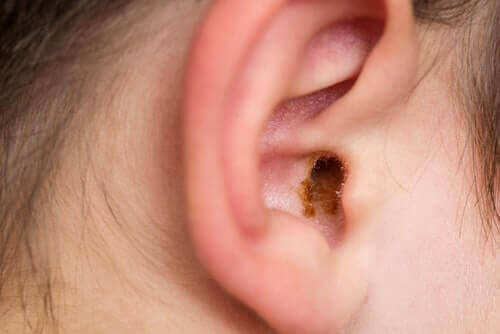Understanding earwax: guide to colour, consistency and smell

Understanding earwax: guide to colour, consistency and smell
4 minutes
Published 15 June 2023
Earwax is something we all have. But, as it’s one of those bodily fluids that’s usually out of sight and out of mind, it’s easy to forget the important part it plays in good ear health.
By trapping dust, hair and dirt, earwax cleans the lining of the ear canal. As most people continually produce earwax, there’s always enough to keep their ears clean. Earwax also lubricates the ear, repels water and, because it’s acidic, inhibits the growth of fungi and bacteria.
What is earwax made of?
The main component of earwax is sebum, a bodily secretion composed mostly of saturated and unsaturated fats.
Because its job is to clean the ear, it also contains dead skin cells, sweat, hair and dirt.
Funnily enough, earwax is not actually wax at all, but is named for its waxy texture.

What's normal?
Earwax varies in colour, consistency and smell from person to person, and there really is no ‘normal’. So you shouldn’t be too worried about minor differences. However, any changes could be an indication of an ear infection, injury or wider health problems.
Earwax colour
As we’ve mentioned, earwax will not look the same for everyone. But generally speaking, it should range from yellow and orange to a light brown colour. If your earwax varies from this spectrum, read on to find out the possible causes.
Black earwax
Very dark, or even black earwax is a common sign of oxidisation. Put simply, this just means that black earwax has been in the ear too long and has been exposed to the air and natural bacterial fermentation.
Finding black earwax can be a concern, but it’s nothing to worry about. For people using hearing aids, black earwax is a common occurrence.
Red earwax
Red earwax is usually a sign that there is blood present in the ear. As the ear canal contains many blood vessels, it could be just a scratch. However, it could also be a sign of an ear infection.
If you have naturally dark earwax it can be hard to tell whether there’s any blood present. In this case, just put some earwax on a tissue and squeeze. You should then see the underlying colour more easily.
If you’re concerned about blood in your earwax, you should get your ears checked by an audiologist.
As ear trauma or a ruptured eardrum are other possible causes of red earwax, we strongly suggest you seek medical advice if the problem persists, especially if you also feel dizzy or experience hearing loss.
Yellow and orange earwax
Generally, earwax should range from yellow to light brown. This color spectrum is considered normal.
White or very light earwax
The cause of very light or even white earwax is most probably down to the fact that it contains skin picked up from a dry and flaky ear canal. People with skin conditions, such as eczema or psoriasis, often have earwax of this colour.
Green earwax
If there’s green earwax present in your ear it’s usually a sign of an infection, most probably a middle ear infection, especially if this green discharge is accompanied by an unpleasant smell.
To check if your green earwax is caused by an infection, make an appointment with your GP, who will probably treat it with antibiotic ear drops or a course of oral antibiotics.
Earwax consistency
Perhaps surprisingly, the consistency of the wax in your ear is down to your ancestors and how they genetically adapted to the climate in which they once evolved.
People of Caucasian or African descent are more likely to have wet earwax, while people with Asian ancestry are liable to have dry earwax.
Watery earwax
Watery earwax is not the same as having wet earwax, which is common after diving or swimming, although it could be a sign of otitis externa, commonly called swimmer’s ear.
Watery earwax is often caused by a middle ear infection. If this is the case, watery earwax isn’t really earwax, it is pus draining from the infection itself. This can be treated easily with antibiotics, so do make an appointment with your GP.
Another possible cause could be a cholesteatoma, which is a skin growth, a lot like a cyst, in the ear canal. A buildup of dirt and earwax means that debris overflows and comes out the ear. If you suspect your watery earwax is caused by this condition, it’s best to seek medical advice from your doctor.
Dry earwax
As we’ve mentioned above, dry and flaky earwax may just be down to Asian ancestry. Alternatively, it could simply be a sign of ageing. As we get older, the wax in our ears does tend to become flakier.
However, flaky earwax can indicate health problems such as eczema or an ear infection. If, along with flaky earwax, you are experiencing any itching or inflammation in your ear, do consult your GP, who will determine whether or not you need treatment.
Author
Boots Hearingcare
Boots Hearingcare



